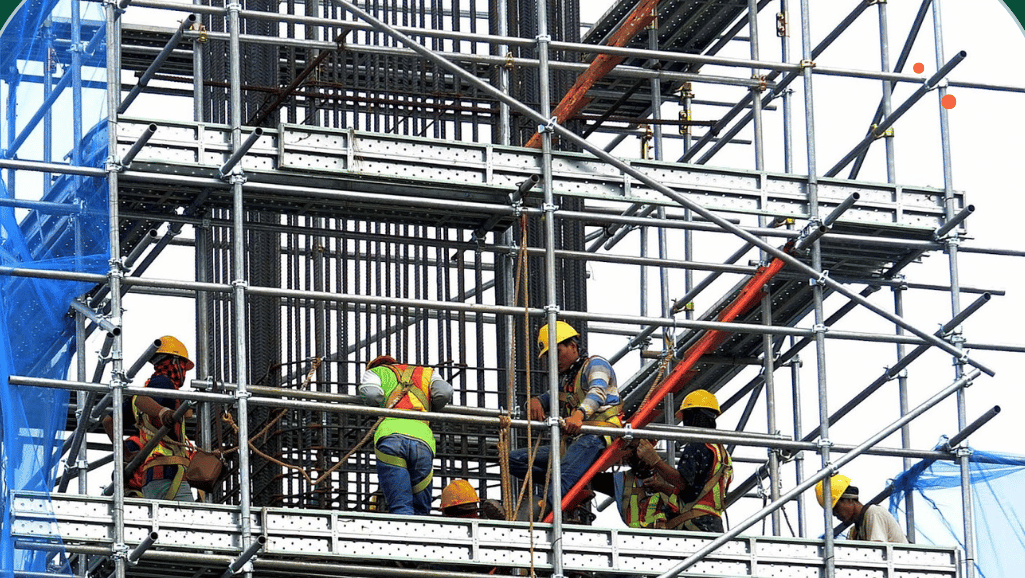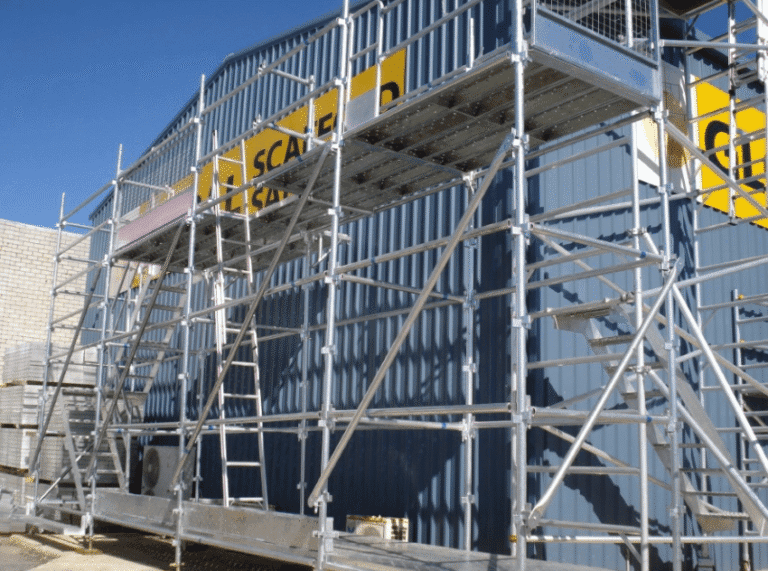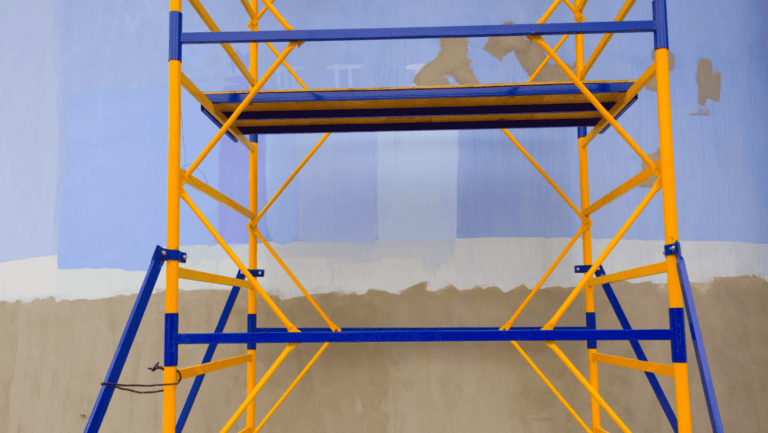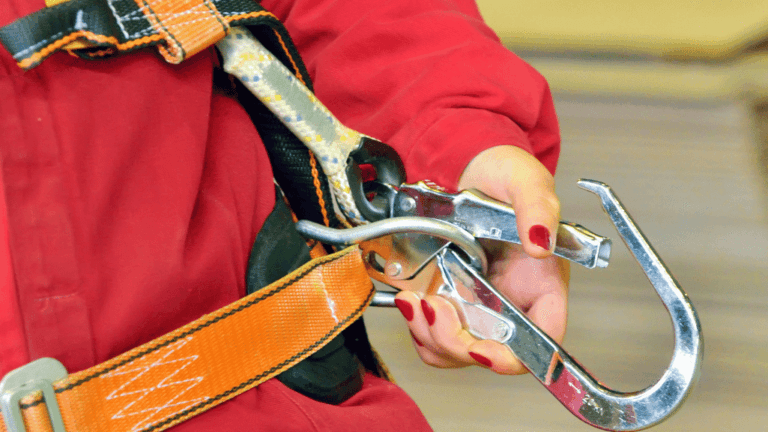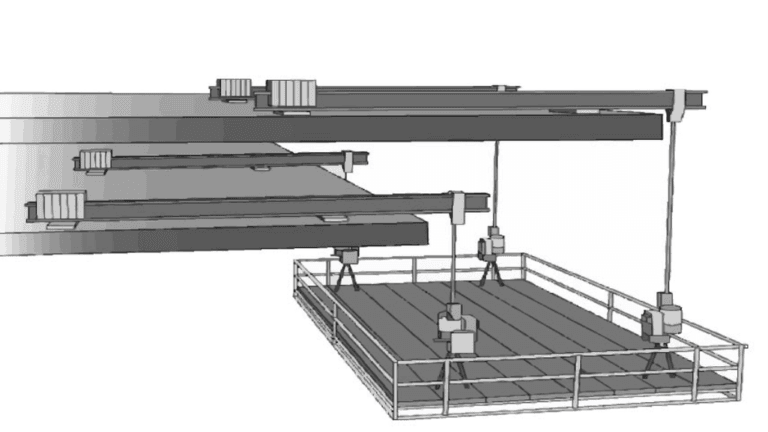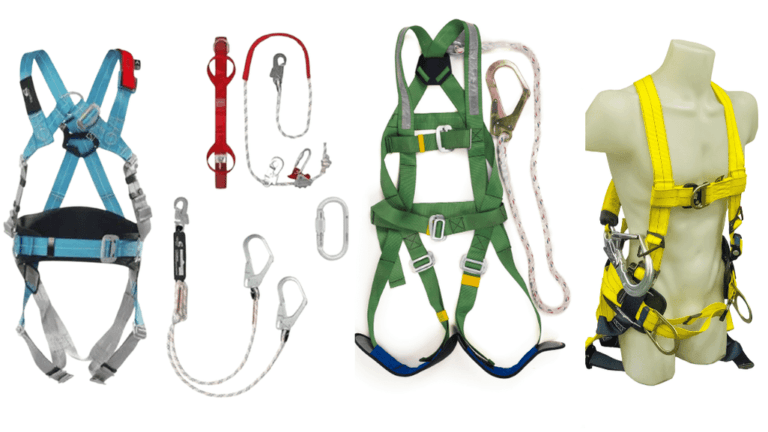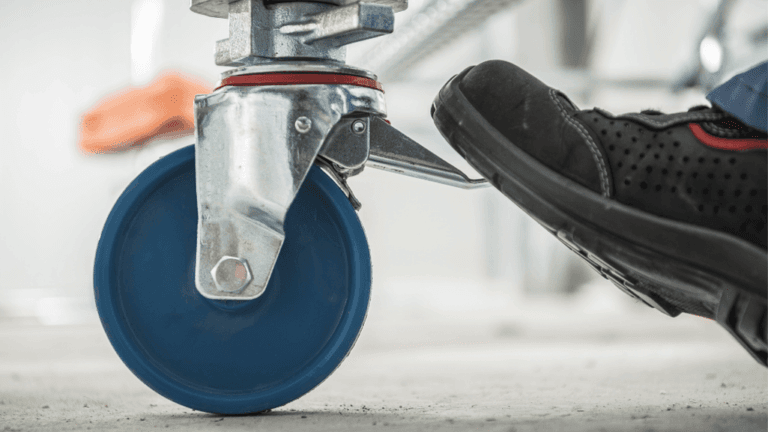Phone:
(+65)8319-0742
Safety is of utmost importance in any construction project, especially when working at heights. With approximately 4,500 scaffolding-related injuries occurring each year, it is crucial to implement proper safety measures and follow industry regulations. One effective solution that promotes both safety and efficiency is pipe scaffolding.
Pipe scaffolding is a versatile system that utilizes scaffolding pipes, scaffold pipe fittings, and scaffold tubes to create a secure and stable platform for workers. It is commonly used in industrial scaffolding, offering durability and strength to withstand heavy loads and provide a safe working environment.
When constructing a pipe scaffold, it is important to follow proper pipe scaffold construction techniques and adhere to relevant standards and regulations. By using high-quality materials and reliable pipe scaffold fittings, you can ensure the stability and integrity of the structure.
Tube and clamp scaffolding is a popular type of pipe scaffolding that uses steel pipes and adjustable clamps to create a variety of configurations. This system offers flexibility and adaptability, allowing for easy setup and modifications according to project requirements.
By choosing reputable scaffolding suppliers and using quality pipe scaffolding systems, you can ensure the safety and efficiency of your construction projects.
Key Takeaways:
- Pipe scaffolding provides a secure and stable platform for workers at elevated heights in construction projects.
- It is important to follow proper construction techniques and adhere to industry standards and regulations.
- Tube and clamp scaffolding is a popular type of pipe scaffolding that offers flexibility and adaptability.
- Choosing reputable scaffolding suppliers and using high-quality materials ensures the safety and efficiency of projects.
- Regular inspections and maintenance are essential to ensure the stability and integrity of the pipe scaffolding system.
Understanding Scaffold Safety Tips
When working on scaffolding structures, prioritizing safety is essential to prevent accidents and ensure a secure work environment. By following specific scaffold safety tips, workers can minimize workplace hazards and promote a culture of safety.
Personal Protective Equipment (PPE)
- Use fall protection equipment, such as harnesses and lanyards, to prevent falls from heights.
- Wear a hard hat to protect against head injuries from falling objects.
- Invest in hand-protecting gloves to safeguard against cuts, abrasions, and injuries.
- Consider using tool-tether lanyards to prevent dropped tools or equipment.
Understanding Load-Bearing Capacities
To maintain scaffold safety, it is crucial to understand the load-bearing capacities of the scaffolding structure. Exceeding the weight limits can compromise the integrity of the scaffold and increase the risk of collapses or accidents. Always follow manufacturer specifications and guidelines when determining the maximum weight the scaffold can support.
Adhering to Scaffold Regulations
Complying with scaffolding regulations is paramount in maintaining a safe work environment. Familiarize yourself with local, state, and federal regulations pertaining to scaffold construction, inspection, and usage. Stay up-to-date with any industry-specific standards or guidelines that may apply to your work.
Regular Scaffold Inspections
To ensure the ongoing safety of scaffolding structures, regular inspections are necessary. Conduct thorough inspections before scaffolding setup, checking for any defects, damage, or missing parts. Follow the manufacturer’s instructions for proper assembly and installation. Periodically inspect the scaffolding during use to identify any hazards or structural issues.
Creating a Safe Work Area
- Clear any debris, tools, or materials from the work area to prevent tripping or falling hazards.
- Install guardrails, toe boards, and safety nets to protect workers from falls.
- Ensure the scaffolding is stable and properly secured to prevent tipping or displacement.
Awareness of Workplace Hazards
- Identify and address potential workplace hazards such as uneven surfaces, unstable ground, or nearby power lines.
- Monitor weather conditions, avoiding work on scaffolding during high winds, heavy rain, or icy conditions.
- Train workers to recognize and report any unsafe conditions or behaviors.
By implementing these scaffold safety tips, workers can significantly reduce the risk of accidents and injuries, creating a safer work environment for all.
| Scaffold Safety Tips | Benefits |
|---|---|
| Use personal protective equipment (PPE) | Prevents injuries from falls and falling objects |
| Understand load-bearing capacities | Prevents scaffold collapses and accidents |
| Adhere to scaffold regulations | Ensures compliance and legal requirements |
| Regular scaffold inspections | Identifies and addresses hazards promptly |
| Create a safe work area | Reduces the risk of falls and accidents |
| Awareness of workplace hazards | Prevents accidents due to hazardous conditions |
Exploring Types of System Scaffolding
System scaffolding, also known as modular scaffolding, is a versatile and efficient solution for construction projects. It consists of horizontal and vertical structural components, along with pre-engineered joints and supports. Different types of system scaffolding offer unique features and benefits tailored to specific project requirements. Let’s explore some of the popular options:
Ringlock Scaffolding
Ringlock scaffolding is renowned for its rigid and versatile rosette-type connector system. The circular rings allow for quick and secure assembly, providing stability to the scaffold structure. This type of scaffolding is highly adaptable and can be easily configured to suit various project needs.
Cuplock Scaffolding
Cuplock scaffolding utilizes metal cups as locking mechanisms to secure horizontal beams. This system offers excellent load-bearing capacity and is known for its strength and durability. Cuplock scaffolding is often preferred for projects that require high scaffolding stability and enhanced safety.
Kwikstage Scaffolding
Kwikstage scaffolding is a pre-manufactured system that offers quick assembly and disassembly. It features horizontal platforms and vertical standards, making it easy to adapt to different heights and configurations. The robust design of Kwikstage scaffolding ensures stability and reliability on construction sites.
OCTO® Scaffolding
OCTO® scaffolding is a cutting-edge system that provides versatility, strength, and efficiency. Its unique design and advanced patented connectors allow for easy customization and adaptability to complex structures. OCTO® scaffolding offers excellent load-bearing capacity and is cost-effective due to its lightweight components and efficient installation process.
Each type of system scaffolding has its own advantages in terms of assembly time, versatility, load capacity, and suitability for different project requirements. Understanding the features and considerations of each system scaffold type is essential for selecting the most appropriate solution for your construction project.
| Scaffolding Type | Key Features | Advantages |
|---|---|---|
| Ringlock Scaffolding | Rigid rosette-type connector system |
|
| Cuplock Scaffolding | Metal cups for locking beams |
|
| Kwikstage Scaffolding | Pre-manufactured with horizontal platforms and vertical standards |
|
| OCTO® Scaffolding | Unique design with patented connectors |
|
The image above provides a visual representation of the different types of system scaffolding discussed.
The Benefits of OCTO® Scaffolding
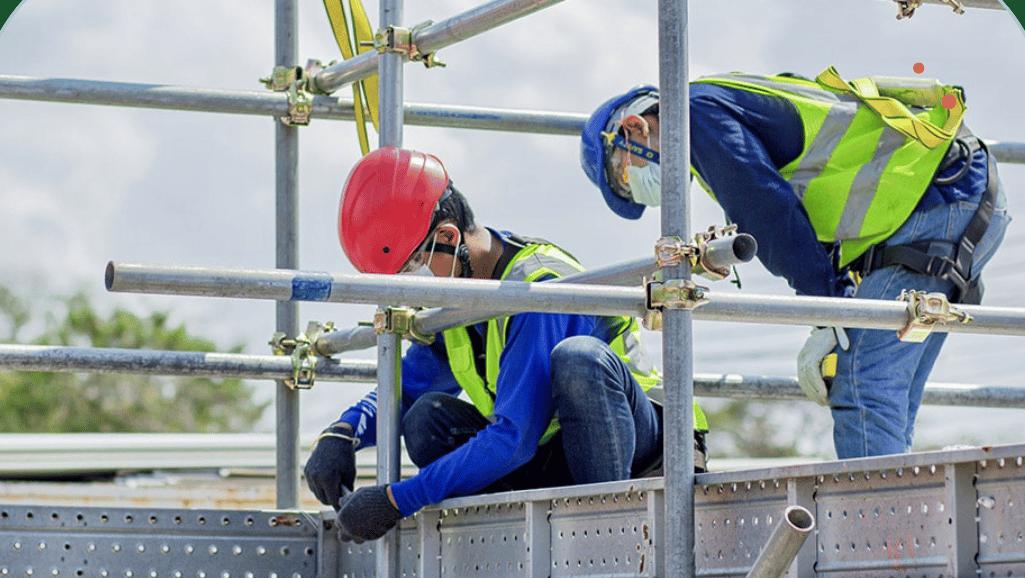
OCTO® scaffolding offers numerous advantages that contribute to enhanced scaffold safety, reliability, versatility, and cost-effectiveness. This innovative system is specifically engineered with stability in mind, ensuring the highest level of safety for workers at elevated heights. The scaffolding is designed to meet or exceed industry safety standards, providing peace of mind during construction and maintenance projects.
One of the key benefits of OCTO® scaffolding is its exceptional load-bearing capacity. With its robust structure and high-quality materials, OCTO® scaffolding can support heavy loads, making it suitable for a wide range of applications. This enables workers to perform their tasks confidently, knowing that the scaffolding can withstand the required weight and pressure.
The unique design of OCTO® scaffolding includes patented connectors that allow for unmatched versatility. These connectors enable easy customization and the creation of various configurations, making it adaptable to different project requirements. Whether it’s a complex scaffold design or a simple structure, OCTO® scaffolding offers the flexibility to meet specific needs, ensuring efficient and effective work processes.
Aside from its safety and versatility, OCTO® scaffolding is also highly cost-effective. The system is designed with fewer and lighter components, translating to reduced transportation and installation costs. Furthermore, OCTO® scaffolding can be quickly assembled and dismantled, saving valuable time and resources. Its efficient design not only reduces labor costs but also minimizes site disruptions, making it an economical choice for construction and maintenance projects.
Understanding Pipe Scaffolding
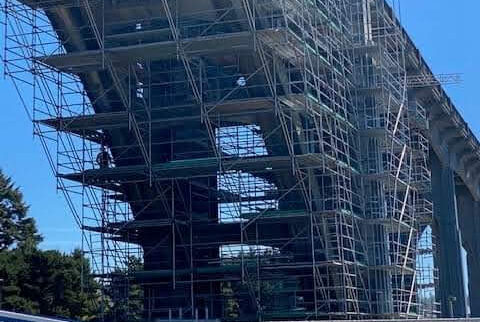
Pipe scaffolding plays a critical role in providing a stable and secure platform for workers operating at heights. To fully grasp the concept of pipe scaffolding, it is essential to comprehend its different components and specifications.
Components of Pipe Scaffolding
- Vertical pipes: These upright pipes serve as the main support for the scaffold structure and are responsible for its stability.
- Horizontal pipes: Also known as ledger pipes, these are connected to the vertical pipes and provide support for the scaffolding platform.
- Diagonal braces: They reinforce the overall stability of the scaffolding system by connecting the vertical and horizontal pipes at an angle.
- Base plates: These flat plates rest at the bottom of the vertical pipes to distribute the load evenly and enhance the scaffold’s stability.
- Adjustable jacks: They allow for height adjustment of the scaffolding to accommodate different working levels and uneven ground surfaces.
Specifications of Pipe Scaffolding
Pipe scaffolding can be made from various materials such as bamboo, wood, hot-rolled steel, zinc-coated steel, aluminum, and galvanized steel. However, the most common material used is galvanized steel due to its strength, durability, and resistance to corrosion.
The average diameter of scaffolding pipes is 48.3mm, with thickness ranging from 3.2mm to 4mm. These pipes should be straight and capable of withstanding heavy loads, ensuring the safety of workers.
Benefits of Pipe Scaffolding
Pipe scaffolding offers several advantages in construction and maintenance projects:
- Safety: The robust structure of pipe scaffolding provides a secure platform, minimizing the risk of accidents and ensuring worker safety.
- Easy assembly: The standardized components of pipe scaffolding allow for quick and hassle-free assembly, saving time and effort.
- Customizability: Pipe scaffolding can be easily adjusted and configured to adapt to various project requirements, providing flexibility and versatility.
- Load-bearing capacity: The strong and durable nature of galvanized steel pipes enables pipe scaffolding to bear heavy loads and support workers and equipment.
- Cost-effective: Pipe scaffolding is a cost-effective solution due to its reusability, longevity, and minimal maintenance requirements.
With an understanding of pipe scaffolding’s components, specifications, and benefits, construction professionals can effectively plan and implement scaffolding systems that prioritize safety, efficiency, and productivity.
Advantages of Pipe Scaffolding
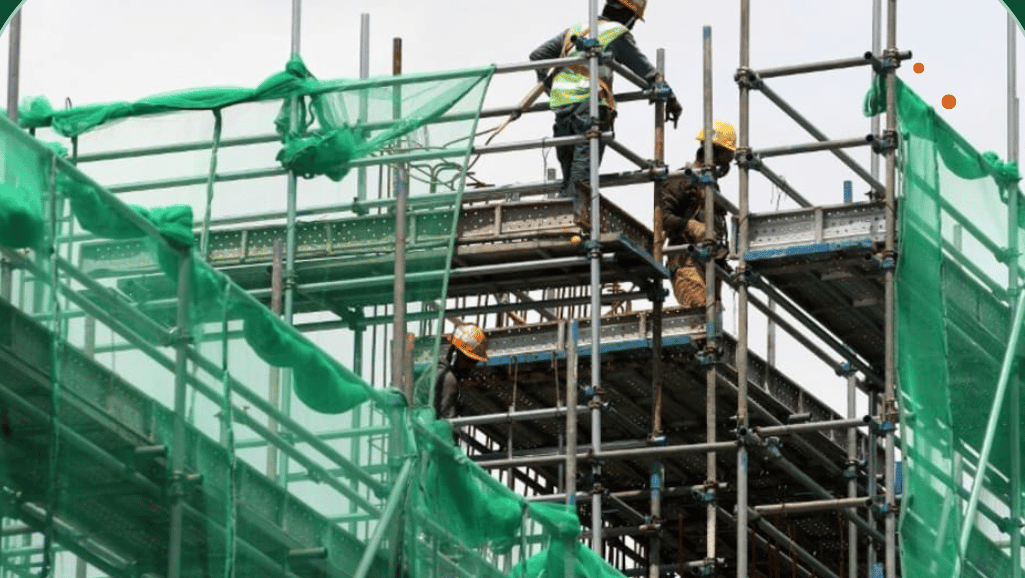
Pipe scaffolding offers several advantages in construction and maintenance projects. Its unique features contribute to enhanced safety, efficient work processes, and minimal site impact.
Scaffolding Safety
One of the primary advantages of pipe scaffolding is its ability to provide a secure and stable platform for workers at heights. Its strong and sturdy structure ensures safety and reliability, reducing the risk of accidents and injuries.
Efficient Work Processes
Pipe scaffolding allows for efficient work processes by providing easy access to different parts of the worksite. It enables workers to navigate the construction or maintenance area swiftly, increasing productivity and minimizing delays.
High Load-Bearing Capacity
The load-bearing capacity of pipe scaffolding is another significant advantage. It can support heavy loads, ensuring the safety of workers and equipment during construction activities. This feature increases the versatility and functionality of pipe scaffolding in various project requirements.
Supervision and Monitoring
Pipe scaffolding enables effective supervision and monitoring of the worksite. It provides clear visibility to supervisors, allowing them to oversee the progress of the project and ensure that work is being performed in accordance with safety standards and established procedures.
Minimal Site Impact
Pipe scaffolding has minimal site impact, making it an ideal choice for construction projects. It can be easily assembled and dismantled, minimizing disruption to the surrounding area. This feature is particularly beneficial in urban environments or areas with limited space.
Overall, pipe scaffolding offers numerous advantages, including enhanced safety, efficient work processes, high load-bearing capacity, effective supervision and monitoring, and minimal site impact. These features contribute to the successful completion of construction and maintenance projects while ensuring the well-being of workers and the overall project’s efficiency.
Pipe Scaffolding: Ensuring Safety and Efficiency
When it comes to construction and maintenance projects, pipe scaffolding plays a crucial role in ensuring both safety and efficiency. With its sturdy structure and reliable design, pipe scaffolding provides the stability and security needed for workers to perform their tasks confidently. Let’s explore the key benefits of pipe scaffolding that contribute to a safe and efficient work environment.
Scaffold Stability
One of the main advantages of pipe scaffolding is its exceptional stability. The strong framework, created by using durable pipes and reliable fittings, ensures a solid foundation that can withstand the demands of various construction activities. This stability is essential for the safety of workers at elevated heights and helps prevent accidents caused by scaffold instability.
Easy Assembly
Another significant advantage of pipe scaffolding is its ease of assembly. The standardized components and simple installation process make it convenient for construction teams to set up the scaffolding quickly. This saves valuable time and effort, allowing workers to start their tasks promptly and ensuring efficient project progress.
Durability
Pipe scaffolding is built to withstand the rigors of construction sites and demanding work conditions. The materials used, such as galvanized steel or aluminum, are known for their strength and durability. This ensures that the scaffolding can withstand heavy loads, adverse weather conditions, and prolonged use, providing a robust and long-lasting support system for workers.
Safety Assurance
Pipe scaffolding is designed to meet strict safety standards and regulations. Its reliable construction and quality assurance processes give workers the peace of mind they need to focus on their tasks without worrying about scaffold failure or accidents. This safety assurance fosters a productive work environment and promotes overall project success.
The Importance of Professional Scaffold Installation
When it comes to ensuring the safety and efficiency of your construction or maintenance project, professional scaffold installation is of utmost importance. By entrusting the job to experienced installers, you can rest assured that the scaffolding will be designed, assembled, and inspected according to industry standards. This guarantees the well-being of your workers and the successful completion of your project.
Professional scaffold installers possess the necessary expertise and knowledge to handle various types of system scaffolding, including the innovative OCTO® scaffolding. They are trained in the safe installation and operation of these complex structures, reducing the risks associated with improper assembly and use.
With professional scaffold installation, you can benefit from the following:
- Worker Safety: Professional installers prioritize worker safety throughout the installation process. They ensure that the scaffolding is stable and secure, minimizing the chances of accidents and injuries.
- Project Completion: Timely project completion is vital in any construction or maintenance endeavor. Professional scaffold installers work efficiently, ensuring that the scaffolding is set up and ready for use as quickly as possible.
In addition, professional scaffold installation offers the following advantages:
- Expertise: Professional installers have a thorough understanding of system scaffolding and its appropriate use. They can provide guidance on selecting the right type of scaffolding and offer valuable insights to enhance the efficiency of your project.
- Compliance with Standards: By choosing professional installation, you can ensure that your scaffolding meets all relevant industry standards and regulations. This eliminates the risk of non-compliance, potential fines, and delays in your project.
- Quality Assurance: Professional scaffold installers follow strict quality control procedures to ensure that the scaffolding is properly assembled and meets the highest standards of quality and durability.
| Benefits of Professional Scaffold Installation |
|---|
| Enhanced worker safety |
| Efficient project completion |
| Expertise in system scaffolding |
| Compliance with industry standards |
| Quality assurance and durability |
Conclusion
In conclusion, pipe scaffolding plays a vital role in ensuring the safety and efficiency of construction and maintenance projects. By implementing proper safety measures, following industry regulations, and choosing the right type of system scaffolding, workers can perform their tasks with confidence and minimize the risk of accidents.
OCTO® scaffolding, with its enhanced safety features, reliability, versatility, and cost-effectiveness, proves to be an excellent choice for scaffolding solutions. Its unique design and patented connectors allow for customized configurations and efficient installation.
However, it is essential to emphasize the significance of professional scaffold installation. By entrusting the task to trained and experienced professionals, you can ensure that the scaffolding is properly designed, assembled, and inspected in accordance with industry standards. Professional installation not only guarantees worker safety but also contributes to the successful completion of your project.
By prioritizing scaffold safety, utilizing system scaffolding solutions like OCTO®, and opting for professional installation, you can create a secure and efficient work environment for all workers involved. Maintaining scaffold safety not only protects the well-being of workers but also enhances productivity and project outcomes.
Frequently Asked Questions
What are some important scaffold safety tips?
It is crucial to use personal protective equipment (PPE) such as hard hats and fall arrest equipment. Understanding load-bearing capacities and following scaffold regulations is important. Regular inspections, clean-up sessions, and monitoring weather conditions are also crucial for maintaining safety on scaffolding structures.
What are the types of system scaffolding available?
There are different types of system scaffolding to choose from, including Ringlock scaffolding, Cuplock scaffolding, Kwikstage scaffolding, and OCTO® scaffolding. Each type has its advantages and considerations.
What are the benefits of OCTO® scaffolding?
OCTO® scaffolding offers enhanced safety, reliability, versatility, and cost-effectiveness. It is engineered to be stable, has a high load-bearing capacity, and allows for customized configurations. Additionally, OCTO® scaffolding is cost-effective due to easy transportation, efficient installation, and quick dismantling.
What is pipe scaffolding and what are its specifications?
Pipe scaffolding is primarily used to provide a stable and safe platform for workers at elevated heights. It can be made of various materials and the average diameter of scaffolding pipes is 48.3mm, with thickness ranging from 3.2 to 4mm. The pipes should be straight and capable of bearing heavy loads.
What are the advantages of pipe scaffolding?
Pipe scaffolding enhances safety, allows for efficient work processes, has a high load-bearing capacity, and enables effective supervision and monitoring of the worksite. It also has a minimal impact on the site and can be easily assembled and dismantled.
How does pipe scaffolding ensure safety and efficiency?
Pipe scaffolding provides stability, easy assembly, and durability. It offers a strong and stable framework, ensuring the safety of workers and allowing them to access any part of the structure with confidence.
How important is professional scaffold installation?
Professional scaffold installation is crucial for worker safety and project completion. It ensures that the scaffolding is properly designed, assembled, and inspected according to industry standards. By choosing a professional scaffold installation service, you can ensure the safety and efficiency of your project.

